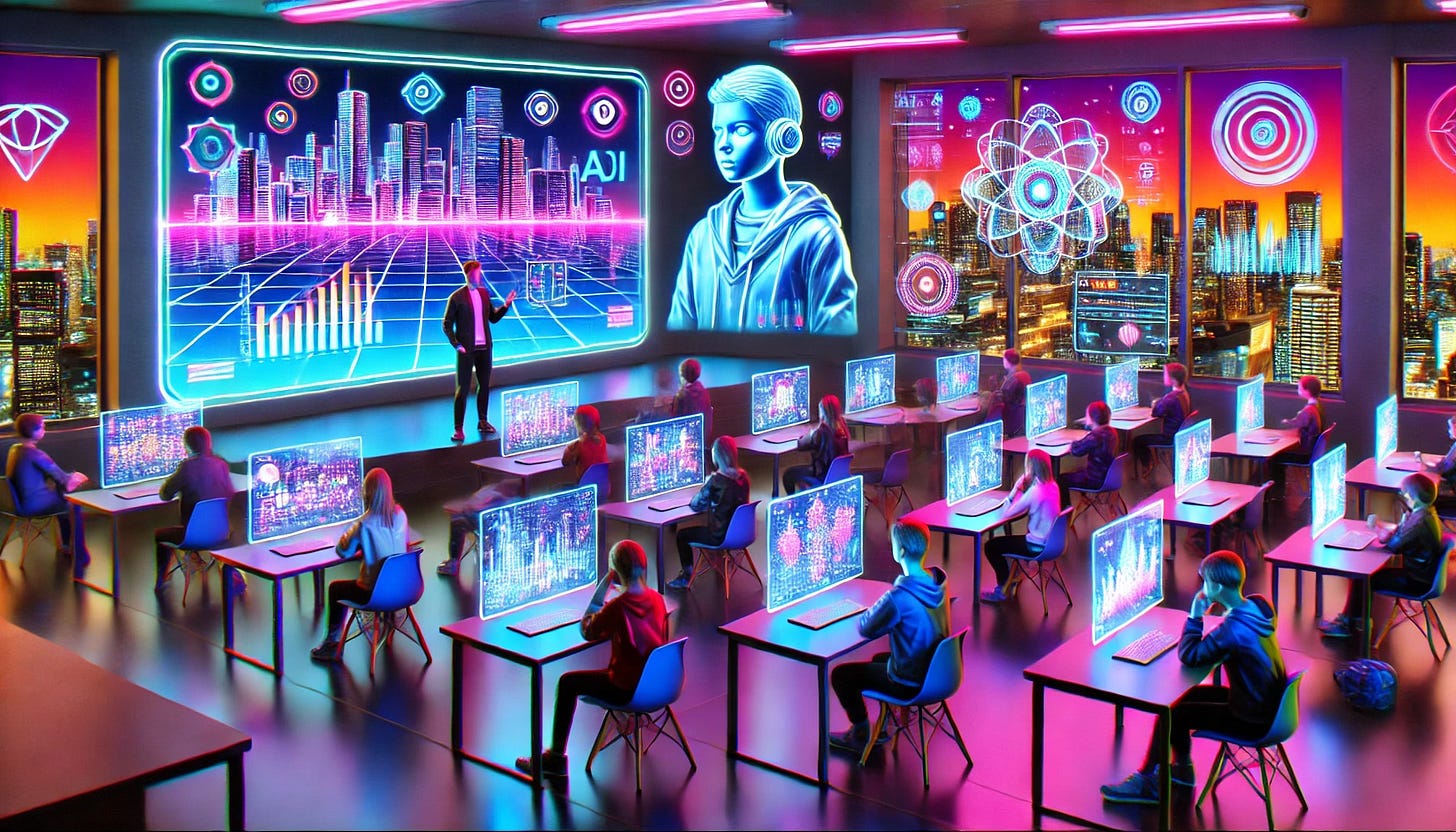Generative AI is revolutionizing education by personalizing learning, automating administrative tasks, and enhancing student engagement. It adapts to individual learning styles, provides real-time feedback, and offers customized materials. Educators benefit from AI through automated grading, lesson planning, and administrative support, allowing them to focus more on teaching. Additionally, AI-driven tools like virtual labs and simulations promote immersive learning and improve retention.
However, the integration of AI in education brings challenges such as increased risks of plagiarism, privacy concerns over student data, and the necessity for educators to adapt their teaching methods. This requires teacher upskilling in the short-term and professional development in the long-term to effectively incorporate AI technologies.
Adapting Student Mindsets in the AI Era
Today in schools throughout the world, students must adopt a new fundamental mindset centered on the timeless question: "What do I want to achieve through my education, and how?" This involves self-reflection to define educational goals and identify the most effective methods to attain them.
With the integration of AI technologies in modern education, students must not only set personal and professional objectives but also strategically use of AI tools to enhance their learning. Balancing AI-driven personalized learning and feedback with the development of critical thinking and problem-solving skills is essential. By actively planning their educational journey, students can maximize AI's benefits while remaining engaged, motivated, and responsible for their own learning outcomes.
Last Wednesday, a professor at Harvard Business School (HBS) shared a valuable guideline on the use of generative AI with his students to help them with an approach to integrating it into their education:
“Use AI as you would a friend: You wouldn’t rely on it to analyze and write-up your case study assignment, but you could use it to check the grammar and accuracy of your work.”
This guideline emphasizes treating AI as a tool to verify your work rather than to create it. While AI can be invaluable for checking grammar, ensuring accuracy, or offering feedback on an assignment, students should refrain from using it to generate or analyze data and content. Striking this balance between assistance and personal effort is crucial for maintaining the integrity of the educational process in the age of AI.
The incorporation of AI into education offers the opportunity to make learning more tailored, efficient, and interactive through task automation and adaptive technologies. Yet, issues such as academic honesty, student data privacy, and the need for teacher training must be addressed. Ensuring ethical AI usage requires clear guidelines that position AI as an aid to enhance, not replace, critical thinking and personal effort. As AI continues to advance, our strategies for integrating it into education must also evolve, promoting both development and responsibility within the learning environment.
Additional Thoughts
One intriguing aspect of AI in education is its potential to bridge educational gaps globally. In regions where access to quality education is limited, AI-powered platforms can provide personalized learning experiences and resources that might otherwise be unavailable. AI can provide tailored guidance on business planning, market analysis, and financial management, reducing the barriers to entry and increasing the likelihood of entrepreneurial success. As a result, communities outside the major economies will be empowered to drive economic growth, foster innovation, and develop vibrant local markets. (For additional insights, read this excellent IMF blog post.")
Furthermore, AI can facilitate lifelong learning by offering continuous education opportunities tailored to an individual's career progression and personal interests, thus fostering a culture of continuous improvement and adaptability in an ever-changing world. (See this outstanding HBR article for more info: Navigating Generative AI as an Older Worker.)




